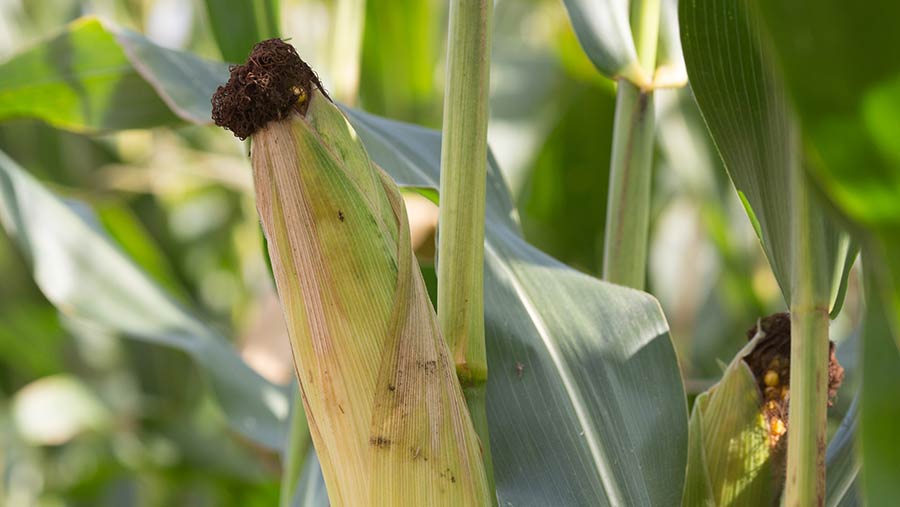How to minimise maize losses as feed supplies tighten
 © Tim Scrivener
© Tim Scrivener With many livestock farms facing the prospect of grass silage shortages this winter as a result of the drought, farmers are being urged to minimise maize losses.
About 20% of maize is lost on average because of aerobic spoilage.
With many grass clamps now already open, Volac business manager Darran Ward said maize silage would be a “lifeline” for many farmers and these losses simply cannot be afforded.
See also: How to manage maize in drought conditions
“Farmers are looking at maize now to make up for shortfalls, so it’s becoming even more pertinent [to reduce losses]. You only have one chance to get it right,” he warned.
To help, Volac have launched the ‘Cut to Clamp Maize’ initiative.
It follows a similar initiative introduced by the company last year for grass silage and aims to help farmers minimise maize losses through five key stages: planning, harvesting, treating, clamping and feeding.
What risks do this year’s crop pose?
Speaking at the launch of the initiative in Stafford on Friday (20 July), Mr Ward said early-planted maize had put its roots down and seemed to be faring much better than later-sown crops.
“Maize that’s gone in early has got its roots down and is tapping into water, but if you’re on dry, light ground, it’s drought-stressed.”
He said the temptation to cut the plant low at harvest to try to get as much in the pit as possible would be strong this year. But he warned this could be dangerous, as soil contamination and mycotoxin risk would be higher and digestibility of such plant material is low.
Speaking to Farmers Weekly, Dave Davies of Silage Solutions said drought-stressed maize crops would have a high fungal challenge, which can affect aerobic stability at feed-out.
Crops harvested early would be lower in dry matter and will also be at higher risk of aerobic spoilage.
Therefore, Dr Davies stressed farmers should seriously consider using a fermentation enhancer to stabilise the pH rapidly and a chemical additive to mitigate these risks.
Five steps to reduce maize losses
1. Plan
- Keep your contractor informed of the anticipated harvest date.
- Clean the clamp and surrounding area thoroughly.
- Make the clamp airtight by lining walls with polythene, leaving sufficient overlap with topsheets.
2. Harvest
- Aim to harvest at 30-33% dry matter. Too dry is more difficult to consolidate and too wet will affect crop fermentation. Harvesting too early means starch in the maize kernels is not fully formed.
- Harvest modern “stay green” varieties while still green – before they have died off.
- Resist the temptation to cut the maize plant too low at harvest – aim for minimum 15cm cutting height.
- Consider a chop length of 1.5-2cm to make consolidation easier.
3. Treat
- Minimise losses by choosing the right targeted at:
* Improving fermentation
* Reducing heating losses from aerobic spoilage.
4. Clamping
- Fill in even layers no more than 15cm deep – the maximum that can be consolidated effectively.
- Apply salt to the top few inches of the clamp to prevent aerobic spoilage.
- Calculate the weight of machinery needed to consolidate to about 750kg or more of fresh weight of maize per cubic metre.
- Consider an oxygen barrier film on top.
- Use a single 1,000-gauge or two 500-gauge polythene sheets on top of that, pull tight and fold together with the side sheets to seal.
- Protect from damage with a woven sheet over the top. Weight with mats, gravel bags, touching tyres or bales.
- Leave a foot gap and use net to stop birds.
- Don’t forget bait to stop rodents.
5. Feeding
- Minimise air exposure using a block cutter or shear grab to keep the face tidy.
- Cut or roll the topsheet back as you progress through the clamp, keeping weights on the front edge.
- Never leave it hanging over the face, as it will create an even hotter microclimate where mould can proliferate.
